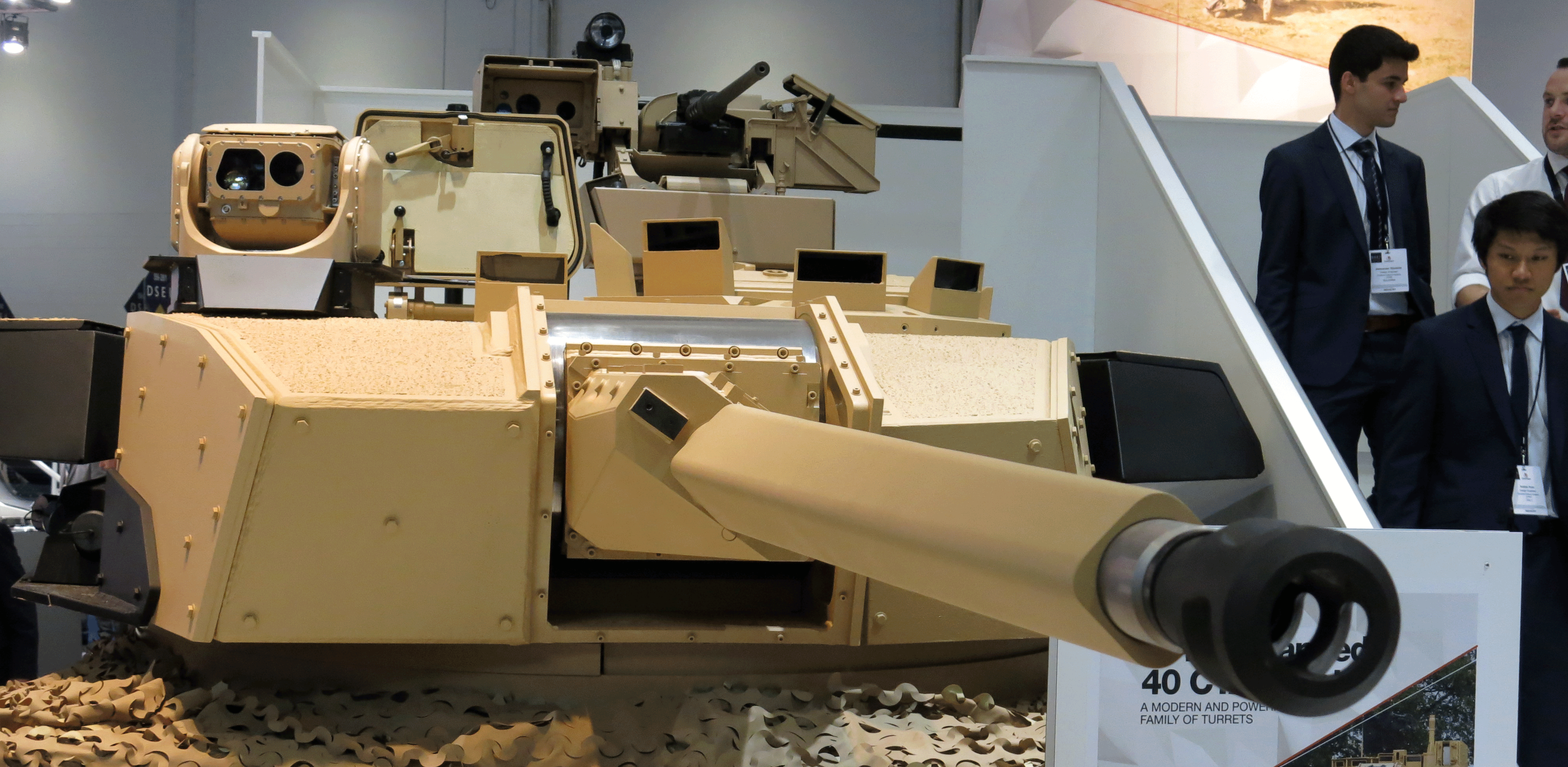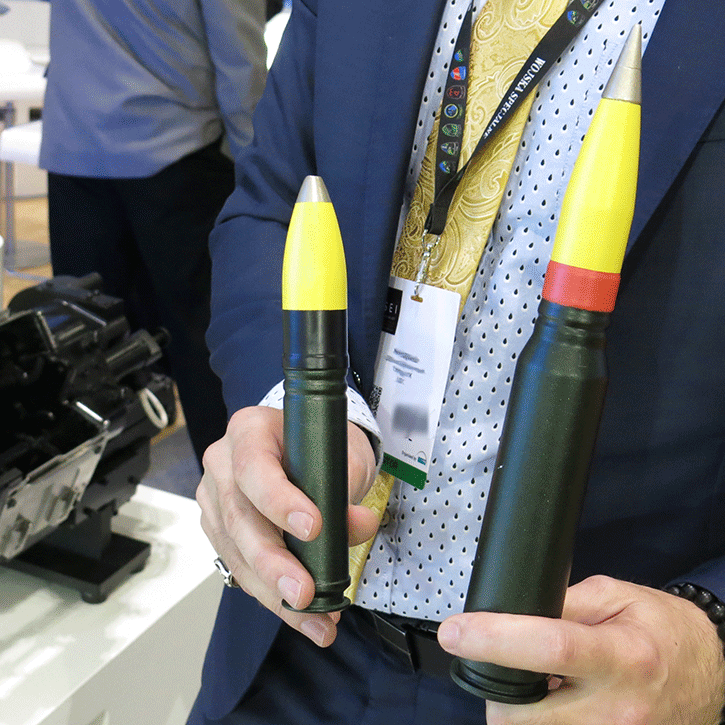Equipping the Strike Brigades
Other programs involving land combat systems highlighted three of the leading procurement programs now underway, including the new Ajax, modernized Warrior and yet to be selected Mechanized Infantry Vehicle (or MIV).
Britain is investing over 3.5 billion pounds in the fielding of 589 new armored vehicles based on General Dynamics ASCOD 2, to equip its new strike brigades. 245 Ajax strike and reconnaissance vehicles will be included in the program. Equipped with a gun turret manned by two crewmembers, its main armament is the new 40mm case telescoped cannon and equipped with cutting-edge electronic sensors and systems, Ajax will be used both for reconnaissance and strike missions as a medium tank.
As Ajax enters service, the British Army will also keep the Warrior infantry fighting vehicle, currently in service, after it goes through a major overhaul process modernizing its armament and systems. The program includes the replacement of the current gun with the Ajax’s new CTA 40, offering increased lethality, logistics commonality, and training across the fleet.
The modernization lead by Lockheed Martin provides an opportunity to test and evaluate new capabilities, including protection, weapons, and electronic systems. At DSEI the company displayed an integrated system comprising the Elbit Systems’ COAPS optronic turret, and Plasan’s smart Multi-Functional Armor system, providing the crew with an enhanced situational awareness that dynamically monitors the vehicle’s level of protection.
Another vehicle demonstrator on site was the CV90 from BAE Systems. This medium tank is armed with 30mm cannon and two Spike multipurpose guided missiles recessed in a stowed launcher-container that is elevated prior to launch. The vehicle also showed advanced protection systems (APS) that include modular armor and the Iron Fist Active Protection System. Iron Fist has been selected by the Dutch military for integration on their CV-9035NL armored vehicles, under a contract awarded to BAE Systems is to integrate and pre-qualify the APS against the threat specification and conduct safety analysis for the entire solution. Netherlands is expected to take a final decision on the procurement of the systems by early 2018, and, if such decision is taken, the country will become the first European Army to field such capability.
- Naval Modernization
- Equipping the Strike Brigades
- New Interest in Active Protection
- Wheeled Armored Vehicles
- Pocket Artillery for the Warfighter
- Fast Wheels for Special Forces
- Unmanned Systems Assume New Roles





















